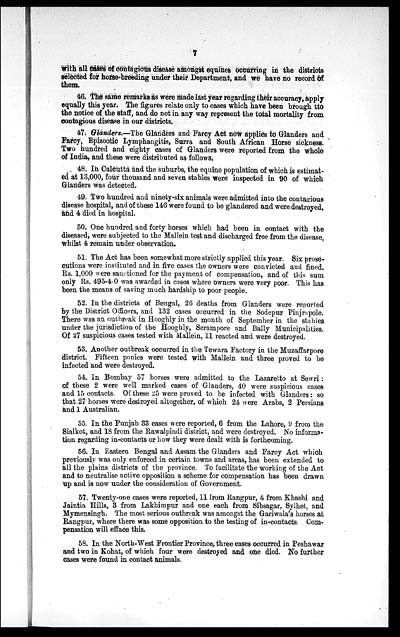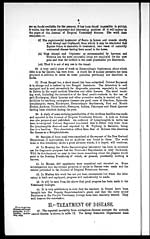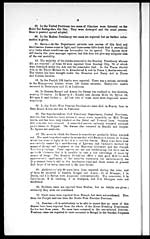Medicine - Veterinary > Civil Veterinary Departments > Annual administration report of the Civil Veterinary Department of India > 1908-1909 > Part A - Provincial administration
(14) Page 7
Download files
Individual page:
Thumbnail gallery: Grid view | List view

1
with all cases of contagious disease amongst equines occurring in the districts
selected for horse-breeding under their Department, and we have no record of
them.
46. The same remarks as were made last year regarding their accuracy, apply
equally this year. The figures relate only to cases which have been brough tto
the notice of the staff, and do not in any way represent the total mortality from
contagious disease in our districts.
47. Glanders.—The Glanders and Farcy Act now applies to Glanders and
Farcy, Epizootic Lymphangitis, Surra and South African Horse sickness.
Two hundred and eighty cases of Glanders were reported from the whole
of India, and these were distributed as follows.
48. In Calcutta and the suburbs, the equine population of which is estimat-
ed at 13,000, four thousand and seven stables were inspected in 90 of which
Glanders was detected.
49. Two hundred and ninety-six animals were admitted into the contagious
disease hospital, and of these 146 were found to be glandered and were destroyed,
and 4 died in hospital.
50. One hundred and forty horses which had been in contact with the
diseased, were subjected to the Mallein test and discharged free from the disease,
whilst 4 remain under observation.
51. The Act has been somewhat more strictly applied this year. Six prose-
cutions were instituted and in five cases the owners were convicted and fined.
Rs. 1,000 were sanctioned for the payment of compensation, and of this sum
only Rs. 495-4-0 was awarded in cases where owners were very poor. This has
been the means of saving much hardship to poor people.
52. In the districts of Bengal, 26 deaths from Glanders were reported
by the District Officers, and 132 cases occurred in the Sodepur Pinjrapole.
There was an outbreak in Hooghly in the month of September in the stables
under the jurisdiction of the Hooghly, Serampore and Bally Municipalities.
Of 27 suspicious cases tested with Mallein, 11 reacted and were destroyed.
53. Another outbreak occurred in the Tewara Factory in the Muzaffarpore
district. Fifteen ponies were tested with Mallein and three proved to be
infected and were destroyed.
54. In Bombay 57 horses were admitted to the Lazaretto at Sewri:
of these 2 were well marked cases of Glanders, 40 were suspicious cases
and 15 contacts. Of these 25 were proved to be infected with Glanders: so
that 27 horses were destroyed altogether, of which 24 were Arabs, 2 Persians
and 1 Australian.
55. In the Punjab 33 cases were reported, 6 from the Lahore, 9 from the
Sialkot, and 18 from the Rawalpindi district, and were destroyed. No informa-
tion regarding in-contacts or how they were dealt with is forthcoming.
56. In Eastern Bengal and Assam the Glanders and Farcy Act which
previously was only enforced in certain towns and areas, has been extended to
all the plains districts of the province. To facilitate the working of the Act
and to neutralise active opposition a scheme for compensation has been drawn
up and is now under the consideration of Government.
57. Twenty-one cases were reported, 11 from Rangpur, 4 from Khashi and
Jaintia Hills, 3 from Lakhimpur and one each from Sibsagar, Sylhet, and
Mymensingh. The most serious outbreak was amongst the Gariwala's horses at
Rangpur, where there was some opposition to the testing of in-contacts. Com-
pensation will efface this.
58. In the North-West Frontier Province, three cases occurred in Peshawar
and two in Kohat, of which four were destroyed and one died. No further
cases were found in contact animals.
Set display mode to: Large image | Zoom image | Transcription
Images and transcriptions on this page, including medium image downloads, may be used under the Creative Commons Attribution 4.0 International Licence unless otherwise stated. ![]()
| Permanent URL | https://digital.nls.uk/75509852 |
|---|




